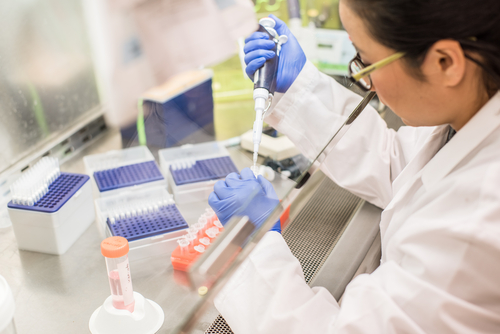Repairing Damage to Muscles May Be Matter of Getting Proteins to Trigger Stem Cells, Early Study Finds

A signaling pathway determines whether muscle stem cells differentiate and mature into working muscle cells, an early study in mice found. Targeting this pathway and its two proteins — Fam3a and Stat3, which works to stimulate Fam3a — may treat diseases or illnesses of muscles, including muscular dystrophies.
Getting these stem cells to differentiate and allow for muscle growth also involves an energy-intensive process called mitochondrial respiration (essentially, the energy source for cells), and promoting this process may lead to a treatment, the study’s researchers report.
“We believe we have found promising drug targets that direct muscle stem cells to ‘make the right decision’ and stimulate muscle repair, potentially helping muscle tissue regeneration, and maintaining tissue function in chronic conditions such as muscular dystrophy and aging,” Alessandra Sacco, PhD, the study’s senior author and an associate professor at Sanford Burnham Prebys, a California research institute, said in a news release.
The study, “The Stat3-Fam3a axis promotes muscle stem cell myogenic lineage progression by inducing mitochondrial respiration,” was published at the journal Nature Communications.
Studies have shown that changes in metabolism are not only indications of the status of stem cells, but can also have important implications for these cells’ fate.
Different types of stem cells, including those that give rise to functional muscle cells, require high levels of energy while undergoing processes of proliferation or differentiation. This means that they require functional and highly responsive mitochondria, organelles known as a cell’s powerhouse.
But little information exists as to how mitochondrial energy production is regulated in muscle stem cells, or MuSCs, in order to promote and support their transformation into mature cells during muscle damage.
An international research team decided to explore the underlying cellular mechanism involved in the control of MuSCs’ fate.
A first analysis of muscle stem cells from mice showed that a signaling protein called Stat3 was key to inducing the mitochondrial action required for stem cell activation upon muscle injury. Stat3 signals were also found to play an important role in these stem cells’ commitment to differentiating into mature muscle cells.
“Our findings indicate that Stat3-dependent regulation of mitochondrial respiration is a major mechanism that promotes MuSC commitment and differentiation,”the researchers wrote.
Further analysis identified 63 genes that could be potential partners of Stat3 involved in this process. The team focused on one of the top 10 genes identified, which encodes a protein called Fam3a.
This protein had already been reported to be involved in the regulation of mitochondrial metabolism. So it might also have a role in mechanisms determining MuSCs’ responsiveness, the researchers decided.
Their work showed that muscle stem cells that lacked Stat3, even upon stimulation to differentiate, had low levels of the Fam3a protein compared to those cells with normal amounts of Stat3. Higher levels of Stat3 were also seen to be associated with significantly higher amounts of Fam3a.
Importantly, when the researchers genetically engineered MuSCs from mice to have low levels of their Fam3a protein, their stem cells showed a poorer rate of commitment to differentiating into muscle cells. Mice lacking this protein also had a higher-than-usual accumulation of uncommitted muscle stem cells than did a group of control mice (non-engineered mice).
Loss of Fam3a could lead to “a deficient MuSC progression” and consequently “compromised skeletal muscle formation” given its important role in stimulating mitochondrial respiration in MuSCs, the researchers said.
Low levels of Fam3a prevented normal muscle mass formation in early mice development, an effect that was maintained during adulthood, they reported.
Next, the team injected a synthetic version of Fam3a protein, or a placebo, in the muscles of mice lacking Stat3. As expected, those given placebo showed a lower number of activated stem cells upon muscle injury. Mice treated with Fam3a, in contrast, showed a significant ability to restore a rate of MuSCs differentiation that reached normal levels.
“The ability to boost and maintain muscle tissue function can help more people live an active and independent life,” said David Sala, PhD, the study’s lead author. “The results of our research can also find applications for muscle-wasting disorders such as muscular dystrophy.”
Further preclinical studies are already underway to validate Fam3a as a safe and effective therapeutic target, the team reported.
“We provide evidence that Stat3 directly promotes the expression of the secreted protein Fam3a as one downstream target that increases mitochondrial respiration in MuSCs,” the study concluded.






